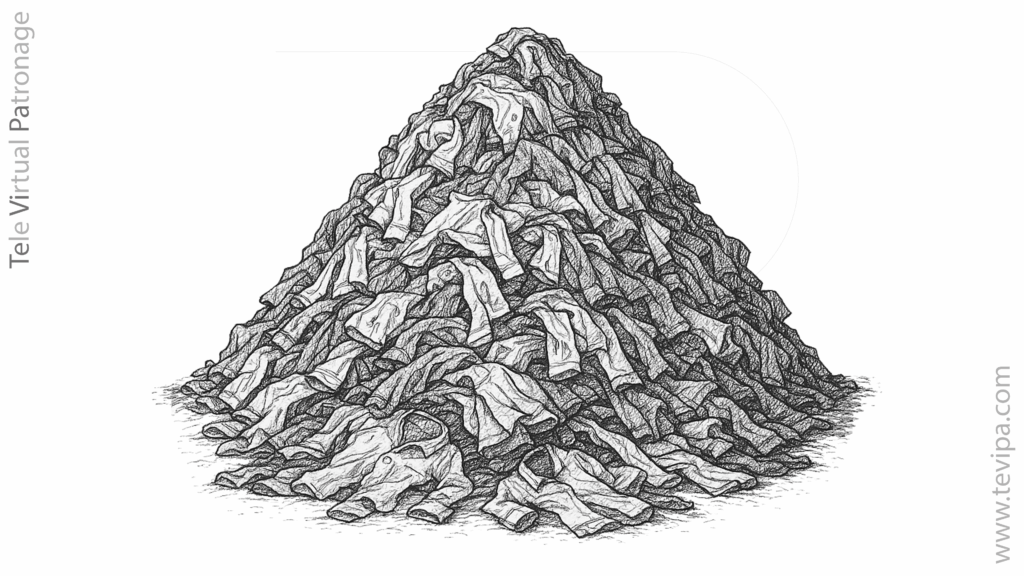
The future is called tailoring
Tailoring: what you want, ecological and made to measure
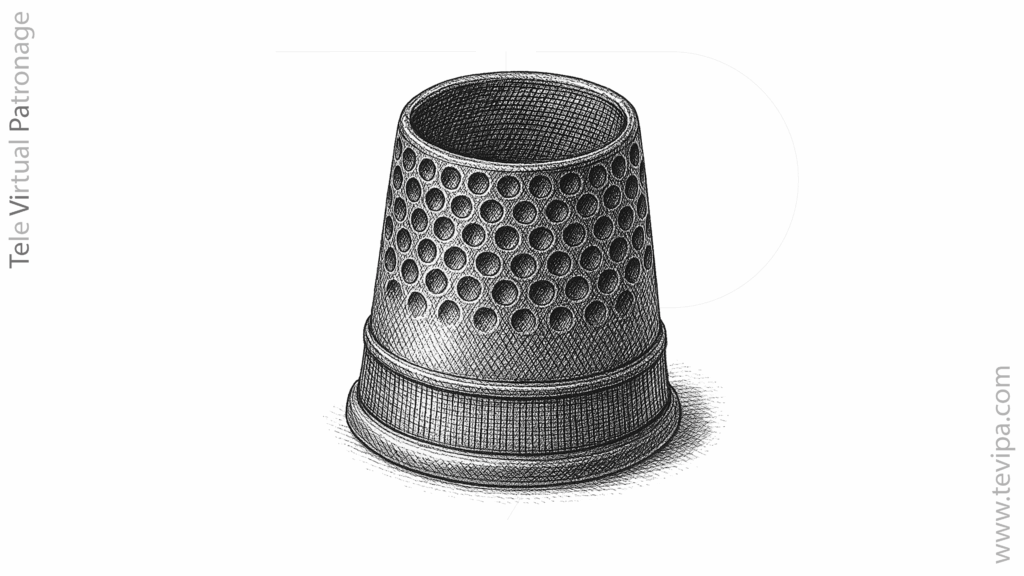
Tailoring is not nostalgia, not a dusty trunk, nor a whim of bygone times. It is the most brutal, precise, and contemporary way to understand fashion. Because what is oldest today proves to be the newest: the only system capable of dressing every body, ecologically and with complete customer satisfaction.
The ecology of the obvious
The fashion industry drags along tons of natural and synthetic fabrics, entire collections of ownerless garments, and above all, international transport that poisons the air we breathe. Tailoring, on the other hand, produces only one garment, made for one single person, with no leftovers, no dead collections, and no intercontinental trips that kill the planet.
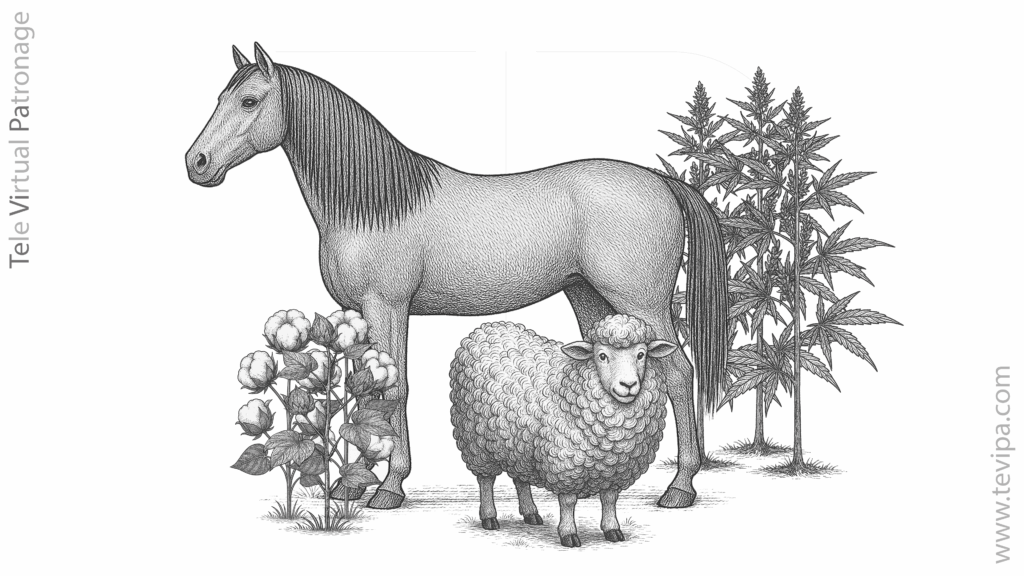
A bespoke suit does not wait to be sold at discount sales, it does not end up in containers as industrial waste. It is born already with a name and a destiny. Every stitch is exact, every garment definitive. That radicality makes tailoring the true ecological fashion, even though it was born long before the word “ecology” existed.
Technique: pattern making and beyond
Pattern making was born from tailors. The industry simplified it, reduced it to sizing systems, turned it into quick mathematics. But a pattern is only the beginning. In tailoring, the pattern is complemented by fittings, alterations, adjustments, and a body of cutting and sewing knowledge that never enters factory manuals.
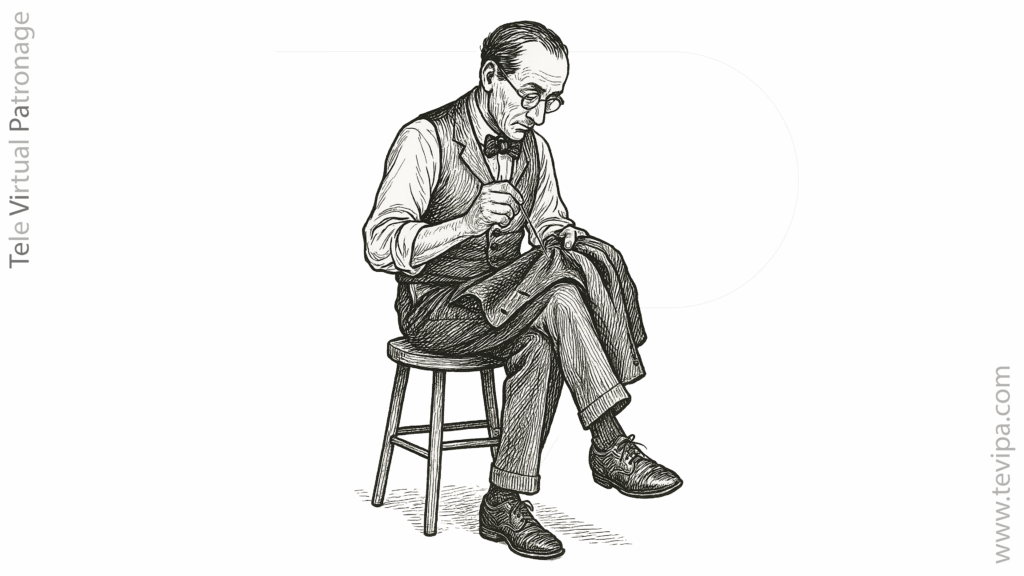
The tailor masters the art of live adjustment, of listening to what the fabric says when it rests on the body. No machine can replace that trained eye that detects a small excess of cloth or the line that needs to be moved. The tailor’s technique is science accumulated over centuries, and at the same time art in its purest form for the future.
The tailor: craftsman, psychologist, advisor
A tailor is not just a craftsman. He is also a confidant. In his workshop one talks, tries, adjusts, and receives advice. The relationship that emerges recalls the barber of old: someone entrusted with more than hair or beard, someone who listens and understands.
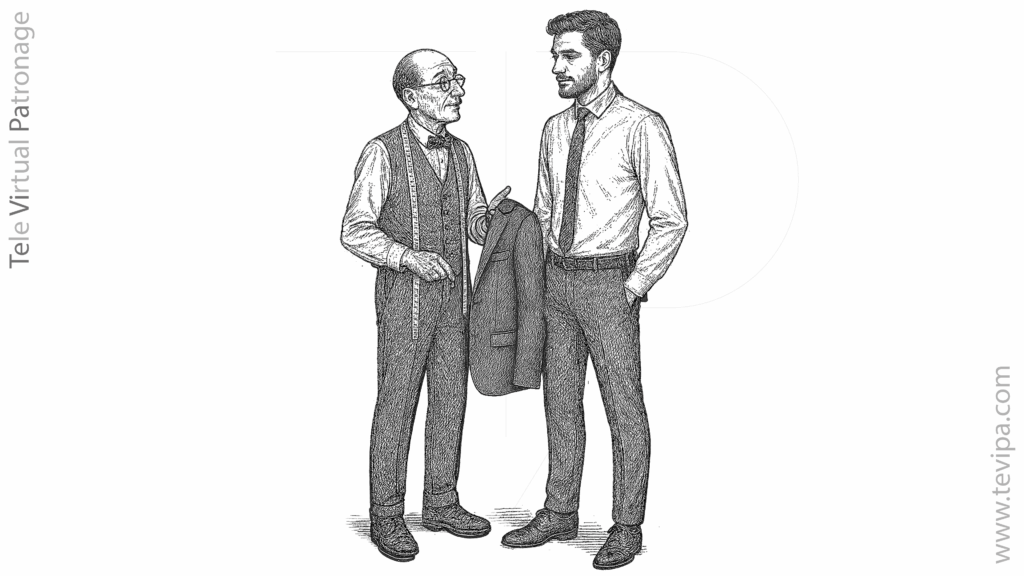
Today, the tailor is also a personal shopper, a stylist of proximity. He guides the client, suggests fabrics, cuts, and colors. But he never imposes. The difference is radical: the stylist dictates how he thinks you should dress; the tailor builds with you what you want to wear. The suit is not an external order, it is an intimate conversation.
That is why loyalty between client and tailor is so strong. Because the client feels he has participated in the creation of the garment, that he has shaped it together with his tailor. That complicity reinforces his ego, his identity, and his style.
True exclusivity
Every person is different, every body unique. And the first image we give of ourselves speaks before any word. In tailoring, that first image is not dictated by a mass collection nor by a stylist who uniforms groups: it is dictated by the client himself, with the help of the tailor.

The suit is adjusted to the specific body, the specific desire, the specific story of a person. That is authentic exclusivity: it is not about paying more to have the same as others in another luxury brand, but about wearing a garment that exists only for you. A garment that speaks of you and that only fits you.
The oldest, the newest
Tailoring does not need to disguise itself as novelty. It is novelty in itself because it answers everything industrial fashion cannot resolve: ecology, technique, the psychology of the client, and true exclusivity.
In a world of international transport, of collections dying silently in warehouses or in mountains of waste, of stylists dictating uniformities, tailoring blooms as the most fierce and contemporary: what you want, ecological and made to measure.
